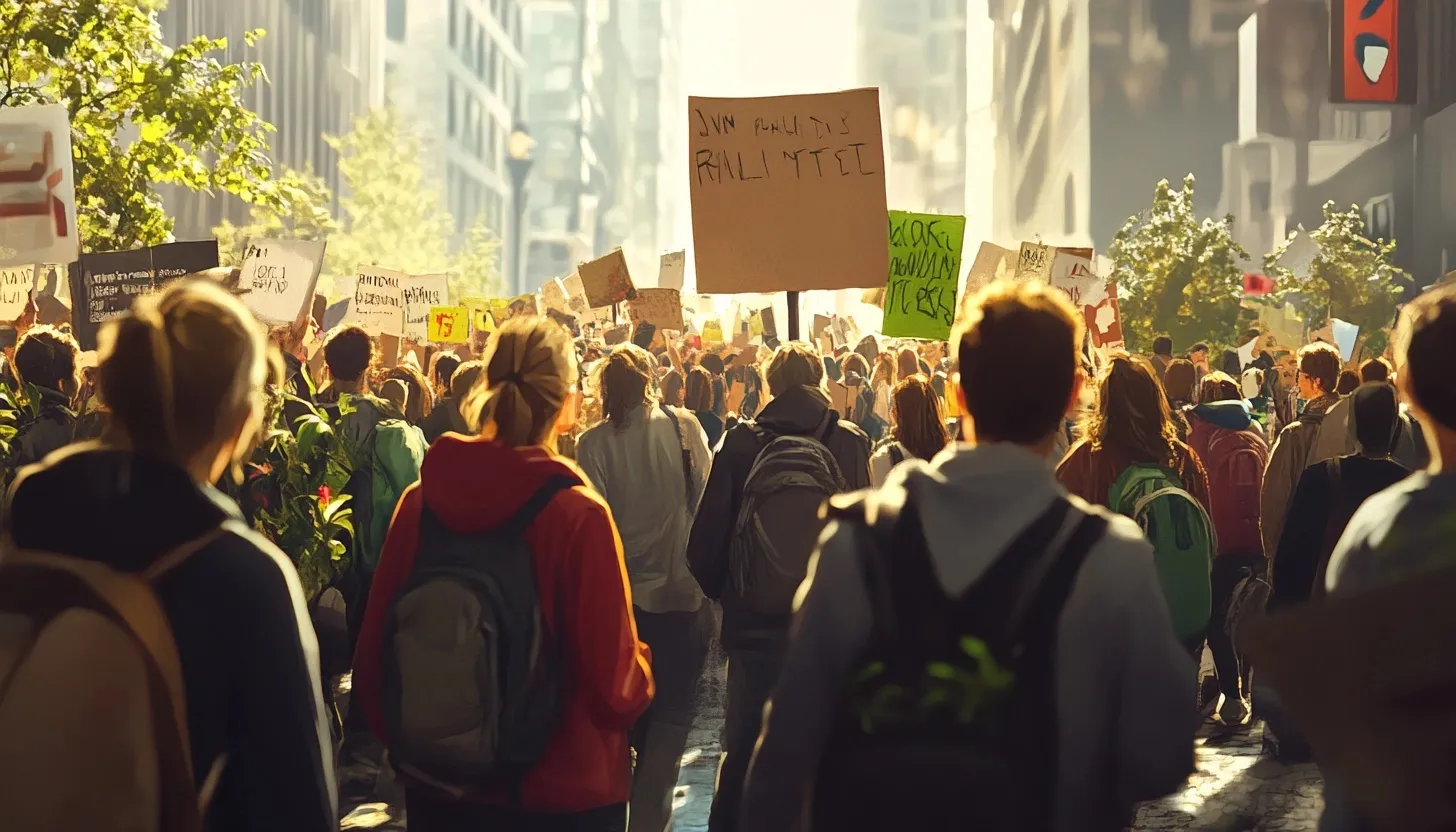


Education
A Case for EarlyWork
As a school student, how might you think about Earlywork as an opportunity to showcase who you are and what you’re capable of?

Education
We live in an age of perpetual uncertainty with infinite possibility; where creativity, imagination and innovation are the foundational skills through which we navigate the world. The line between school and work or between work and play, it's getting blurrier. In this context, play is an essential way of learning about the world. Doing things we enjoy without a goal in mind leads us to find new information, better understand our own capabilities, and the ability to find unexpected joy in walking our own passionate learning paths. We face the future world and our roles within it - with creativity and optimism. We explore the value of naïveté, how we ignite our own spark and harness our own creative spirit, and how we hold space for hopeful creativity in others.
How might that frame be useful for a school student as they look toward the future?
What might be gained by seeing learning, earlywork, relationships and life as an infinite game
If the game is infinite, what are the rules?
When we operate from a place of surplus rather than one of certainty, how might that change our perspective on the world? on our learning and work? on our achievements and failures?
Which emerging spaces are using to build their skills toward purposeful productive creative impact?
What do you want to be when you grow up?
We know that old fashioned career counsellors used to talk in terms of ‘careers’ or ‘jobs’. As if a student in their final years of schooling had any idea what they wanted to do when they ‘grew up’, which served to highlight the difference between where a student is at that moment (hopefully in school) and the chasm that exists between that space . . . and being ‘grown up’. Which is when they presumably need a career. That kind of thinking also assumes that a student understands themselves well enough at their given age to decide what it is that they’ll do, and that somehow they’ll be able to make the right choice (or any choice) in that moment, which will dictate the education and qualifications they’ll require to meet said goal.
Thinking in Small Bets
In today's world a student’s future-work journey is more likely to represent a series of projects. Things which have been created, written, developed, made with sticky tape and wire, drafted, delivered and reflected upon. How might we reshape our framing of students’ future-work possibilities if we thought about their 'earlywork' path as a series of projects? Some projects might work, others might die a sad lonely death but all will provide the opportunity for bravery, for stretch and most of all, for learning.
Learning with Small Bets
A side project is usually a hobby programming project that a student builds outside of, or alongside their normal school day. This tends to appeal to students who lean towards technology, but can also a great practice ground for those who have an interest in entrepreneurship or some other hobby in real life.
Nowadays we see a new pattern emerging . . instead of people going all in on one side project, we see young increasingly creating lots of smaller projects. Small bets.This planning, developing, initiating and building of side projects is super helpful for several reasons:
Exploring different ideas and getting a sense of what it feels like to commit to a project.
Side Projects program enable us to explore different interests and ideas without having to commit to one single large project. This helps to develop a more diverse skill set and discover new passions. One of the challenges as students reach senior years, is not only do they not know what they’re really good at (outside of school subjects or sport), but they don’t necessarily even know what it feels like to lead themselves in an area they’re passionate about.
Working on side projects is a way for students to build up a portfolio.
Students can showcase their skills and stand out to potential partners, employers or even universities - think of portfolio projects as a more meaningful resume. By creating a portfolio of work, students can demonstrate their ability to take initiative, work independently, and produce high-quality work.
Side Projects become your Proof-of-Work
Over time what you're building is a biostack of sorts, whether it's a stack of work, web development, a project or poem, whatever you’re into - to showcase who you are and what you’re capable of. What better time to start building than while you're still learning within the scaffold structures of school?
We live in an age of perpetual uncertainty with infinite possibility; where creativity, imagination and innovation are the foundational skills through which we navigate the world. The line between school and work or between work and play, it's getting blurrier. In this context, play is an essential way of learning about the world. Doing things we enjoy without a goal in mind leads us to find new information, better understand our own capabilities, and the ability to find unexpected joy in walking our own passionate learning paths. We face the future world and our roles within it - with creativity and optimism. We explore the value of naïveté, how we ignite our own spark and harness our own creative spirit, and how we hold space for hopeful creativity in others.
How might that frame be useful for a school student as they look toward the future?
What might be gained by seeing learning, earlywork, relationships and life as an infinite game
If the game is infinite, what are the rules?
When we operate from a place of surplus rather than one of certainty, how might that change our perspective on the world? on our learning and work? on our achievements and failures?
Which emerging spaces are using to build their skills toward purposeful productive creative impact?
What do you want to be when you grow up?
We know that old fashioned career counsellors used to talk in terms of ‘careers’ or ‘jobs’. As if a student in their final years of schooling had any idea what they wanted to do when they ‘grew up’, which served to highlight the difference between where a student is at that moment (hopefully in school) and the chasm that exists between that space . . . and being ‘grown up’. Which is when they presumably need a career. That kind of thinking also assumes that a student understands themselves well enough at their given age to decide what it is that they’ll do, and that somehow they’ll be able to make the right choice (or any choice) in that moment, which will dictate the education and qualifications they’ll require to meet said goal.
Thinking in Small Bets
In today's world a student’s future-work journey is more likely to represent a series of projects. Things which have been created, written, developed, made with sticky tape and wire, drafted, delivered and reflected upon. How might we reshape our framing of students’ future-work possibilities if we thought about their 'earlywork' path as a series of projects? Some projects might work, others might die a sad lonely death but all will provide the opportunity for bravery, for stretch and most of all, for learning.
Learning with Small Bets
A side project is usually a hobby programming project that a student builds outside of, or alongside their normal school day. This tends to appeal to students who lean towards technology, but can also a great practice ground for those who have an interest in entrepreneurship or some other hobby in real life.
Nowadays we see a new pattern emerging . . instead of people going all in on one side project, we see young increasingly creating lots of smaller projects. Small bets.This planning, developing, initiating and building of side projects is super helpful for several reasons:
Exploring different ideas and getting a sense of what it feels like to commit to a project.
Side Projects program enable us to explore different interests and ideas without having to commit to one single large project. This helps to develop a more diverse skill set and discover new passions. One of the challenges as students reach senior years, is not only do they not know what they’re really good at (outside of school subjects or sport), but they don’t necessarily even know what it feels like to lead themselves in an area they’re passionate about.
Working on side projects is a way for students to build up a portfolio.
Students can showcase their skills and stand out to potential partners, employers or even universities - think of portfolio projects as a more meaningful resume. By creating a portfolio of work, students can demonstrate their ability to take initiative, work independently, and produce high-quality work.
Side Projects become your Proof-of-Work
Over time what you're building is a biostack of sorts, whether it's a stack of work, web development, a project or poem, whatever you’re into - to showcase who you are and what you’re capable of. What better time to start building than while you're still learning within the scaffold structures of school?
We live in an age of perpetual uncertainty with infinite possibility; where creativity, imagination and innovation are the foundational skills through which we navigate the world. The line between school and work or between work and play, it's getting blurrier. In this context, play is an essential way of learning about the world. Doing things we enjoy without a goal in mind leads us to find new information, better understand our own capabilities, and the ability to find unexpected joy in walking our own passionate learning paths. We face the future world and our roles within it - with creativity and optimism. We explore the value of naïveté, how we ignite our own spark and harness our own creative spirit, and how we hold space for hopeful creativity in others.
How might that frame be useful for a school student as they look toward the future?
What might be gained by seeing learning, earlywork, relationships and life as an infinite game
If the game is infinite, what are the rules?
When we operate from a place of surplus rather than one of certainty, how might that change our perspective on the world? on our learning and work? on our achievements and failures?
Which emerging spaces are using to build their skills toward purposeful productive creative impact?
What do you want to be when you grow up?
We know that old fashioned career counsellors used to talk in terms of ‘careers’ or ‘jobs’. As if a student in their final years of schooling had any idea what they wanted to do when they ‘grew up’, which served to highlight the difference between where a student is at that moment (hopefully in school) and the chasm that exists between that space . . . and being ‘grown up’. Which is when they presumably need a career. That kind of thinking also assumes that a student understands themselves well enough at their given age to decide what it is that they’ll do, and that somehow they’ll be able to make the right choice (or any choice) in that moment, which will dictate the education and qualifications they’ll require to meet said goal.
Thinking in Small Bets
In today's world a student’s future-work journey is more likely to represent a series of projects. Things which have been created, written, developed, made with sticky tape and wire, drafted, delivered and reflected upon. How might we reshape our framing of students’ future-work possibilities if we thought about their 'earlywork' path as a series of projects? Some projects might work, others might die a sad lonely death but all will provide the opportunity for bravery, for stretch and most of all, for learning.
Learning with Small Bets
A side project is usually a hobby programming project that a student builds outside of, or alongside their normal school day. This tends to appeal to students who lean towards technology, but can also a great practice ground for those who have an interest in entrepreneurship or some other hobby in real life.
Nowadays we see a new pattern emerging . . instead of people going all in on one side project, we see young increasingly creating lots of smaller projects. Small bets.This planning, developing, initiating and building of side projects is super helpful for several reasons:
Exploring different ideas and getting a sense of what it feels like to commit to a project.
Side Projects program enable us to explore different interests and ideas without having to commit to one single large project. This helps to develop a more diverse skill set and discover new passions. One of the challenges as students reach senior years, is not only do they not know what they’re really good at (outside of school subjects or sport), but they don’t necessarily even know what it feels like to lead themselves in an area they’re passionate about.
Working on side projects is a way for students to build up a portfolio.
Students can showcase their skills and stand out to potential partners, employers or even universities - think of portfolio projects as a more meaningful resume. By creating a portfolio of work, students can demonstrate their ability to take initiative, work independently, and produce high-quality work.
Side Projects become your Proof-of-Work
Over time what you're building is a biostack of sorts, whether it's a stack of work, web development, a project or poem, whatever you’re into - to showcase who you are and what you’re capable of. What better time to start building than while you're still learning within the scaffold structures of school?
We live in an age of perpetual uncertainty with infinite possibility; where creativity, imagination and innovation are the foundational skills through which we navigate the world. The line between school and work or between work and play, it's getting blurrier. In this context, play is an essential way of learning about the world. Doing things we enjoy without a goal in mind leads us to find new information, better understand our own capabilities, and the ability to find unexpected joy in walking our own passionate learning paths. We face the future world and our roles within it - with creativity and optimism. We explore the value of naïveté, how we ignite our own spark and harness our own creative spirit, and how we hold space for hopeful creativity in others.
How might that frame be useful for a school student as they look toward the future?
What might be gained by seeing learning, earlywork, relationships and life as an infinite game
If the game is infinite, what are the rules?
When we operate from a place of surplus rather than one of certainty, how might that change our perspective on the world? on our learning and work? on our achievements and failures?
Which emerging spaces are using to build their skills toward purposeful productive creative impact?
What do you want to be when you grow up?
We know that old fashioned career counsellors used to talk in terms of ‘careers’ or ‘jobs’. As if a student in their final years of schooling had any idea what they wanted to do when they ‘grew up’, which served to highlight the difference between where a student is at that moment (hopefully in school) and the chasm that exists between that space . . . and being ‘grown up’. Which is when they presumably need a career. That kind of thinking also assumes that a student understands themselves well enough at their given age to decide what it is that they’ll do, and that somehow they’ll be able to make the right choice (or any choice) in that moment, which will dictate the education and qualifications they’ll require to meet said goal.
Thinking in Small Bets
In today's world a student’s future-work journey is more likely to represent a series of projects. Things which have been created, written, developed, made with sticky tape and wire, drafted, delivered and reflected upon. How might we reshape our framing of students’ future-work possibilities if we thought about their 'earlywork' path as a series of projects? Some projects might work, others might die a sad lonely death but all will provide the opportunity for bravery, for stretch and most of all, for learning.
Learning with Small Bets
A side project is usually a hobby programming project that a student builds outside of, or alongside their normal school day. This tends to appeal to students who lean towards technology, but can also a great practice ground for those who have an interest in entrepreneurship or some other hobby in real life.
Nowadays we see a new pattern emerging . . instead of people going all in on one side project, we see young increasingly creating lots of smaller projects. Small bets.This planning, developing, initiating and building of side projects is super helpful for several reasons:
Exploring different ideas and getting a sense of what it feels like to commit to a project.
Side Projects program enable us to explore different interests and ideas without having to commit to one single large project. This helps to develop a more diverse skill set and discover new passions. One of the challenges as students reach senior years, is not only do they not know what they’re really good at (outside of school subjects or sport), but they don’t necessarily even know what it feels like to lead themselves in an area they’re passionate about.
Working on side projects is a way for students to build up a portfolio.
Students can showcase their skills and stand out to potential partners, employers or even universities - think of portfolio projects as a more meaningful resume. By creating a portfolio of work, students can demonstrate their ability to take initiative, work independently, and produce high-quality work.
Side Projects become your Proof-of-Work
Over time what you're building is a biostack of sorts, whether it's a stack of work, web development, a project or poem, whatever you’re into - to showcase who you are and what you’re capable of. What better time to start building than while you're still learning within the scaffold structures of school?
We live in an age of perpetual uncertainty with infinite possibility; where creativity, imagination and innovation are the foundational skills through which we navigate the world. The line between school and work or between work and play, it's getting blurrier. In this context, play is an essential way of learning about the world. Doing things we enjoy without a goal in mind leads us to find new information, better understand our own capabilities, and the ability to find unexpected joy in walking our own passionate learning paths. We face the future world and our roles within it - with creativity and optimism. We explore the value of naïveté, how we ignite our own spark and harness our own creative spirit, and how we hold space for hopeful creativity in others.
How might that frame be useful for a school student as they look toward the future?
What might be gained by seeing learning, earlywork, relationships and life as an infinite game
If the game is infinite, what are the rules?
When we operate from a place of surplus rather than one of certainty, how might that change our perspective on the world? on our learning and work? on our achievements and failures?
Which emerging spaces are using to build their skills toward purposeful productive creative impact?
What do you want to be when you grow up?
We know that old fashioned career counsellors used to talk in terms of ‘careers’ or ‘jobs’. As if a student in their final years of schooling had any idea what they wanted to do when they ‘grew up’, which served to highlight the difference between where a student is at that moment (hopefully in school) and the chasm that exists between that space . . . and being ‘grown up’. Which is when they presumably need a career. That kind of thinking also assumes that a student understands themselves well enough at their given age to decide what it is that they’ll do, and that somehow they’ll be able to make the right choice (or any choice) in that moment, which will dictate the education and qualifications they’ll require to meet said goal.
Thinking in Small Bets
In today's world a student’s future-work journey is more likely to represent a series of projects. Things which have been created, written, developed, made with sticky tape and wire, drafted, delivered and reflected upon. How might we reshape our framing of students’ future-work possibilities if we thought about their 'earlywork' path as a series of projects? Some projects might work, others might die a sad lonely death but all will provide the opportunity for bravery, for stretch and most of all, for learning.
Learning with Small Bets
A side project is usually a hobby programming project that a student builds outside of, or alongside their normal school day. This tends to appeal to students who lean towards technology, but can also a great practice ground for those who have an interest in entrepreneurship or some other hobby in real life.
Nowadays we see a new pattern emerging . . instead of people going all in on one side project, we see young increasingly creating lots of smaller projects. Small bets.This planning, developing, initiating and building of side projects is super helpful for several reasons:
Exploring different ideas and getting a sense of what it feels like to commit to a project.
Side Projects program enable us to explore different interests and ideas without having to commit to one single large project. This helps to develop a more diverse skill set and discover new passions. One of the challenges as students reach senior years, is not only do they not know what they’re really good at (outside of school subjects or sport), but they don’t necessarily even know what it feels like to lead themselves in an area they’re passionate about.
Working on side projects is a way for students to build up a portfolio.
Students can showcase their skills and stand out to potential partners, employers or even universities - think of portfolio projects as a more meaningful resume. By creating a portfolio of work, students can demonstrate their ability to take initiative, work independently, and produce high-quality work.
Side Projects become your Proof-of-Work
Over time what you're building is a biostack of sorts, whether it's a stack of work, web development, a project or poem, whatever you’re into - to showcase who you are and what you’re capable of. What better time to start building than while you're still learning within the scaffold structures of school?
Other Blog Posts
Research
March 5, 24
How will declining birthrates and ageing populations shape our potential futures?
Research
May 2, 2019
Contemplating the right question is often more important than crafting the right answer.
Story
March 6, 2023
A Science Fiction Prototyping approach to imagining our future oceans.
Research
June 5, 2023
Inputting research and information as networked knowledge nodes with supertags surfaces connections and patterns you might not otherwise pick up.
Design
September 10, 2023
Is AI Stripping Creativity from Architecture? The Dangers of Algorithm-Driven Design
Education
September 24, 2023
What if . . we framed education as an example of chaos theory?
Education
October 17, 2023
Will school education will eventually reform as an emergent system with technology embedded as a key shaping force?
Education
April 18, 2024
What if . . instead of the failures of students, we focused on the failure of systems?. . and used that understanding to collectively reimagine education?
Research
August 20, 2024
UX (User eXperience) is in some ways, a philosophical enquiry, inviting us to question - What is this really about? What is the role of design in this moment?
Books
September 19, 2024
If we disallow radical flank activism does the right to protest mean anything at all?
Think
September 21, 2024
Thinking about Foucault in the context of women worldwide and reproductive justice
Books
November 13, 2024
When we think about development, can the concept of 'equity' be reconceptualised to connect with the context of the Global South without recovering / making visible, plural definitions of 'prosperity' or 'wellbeing'?
👋 say hello


















